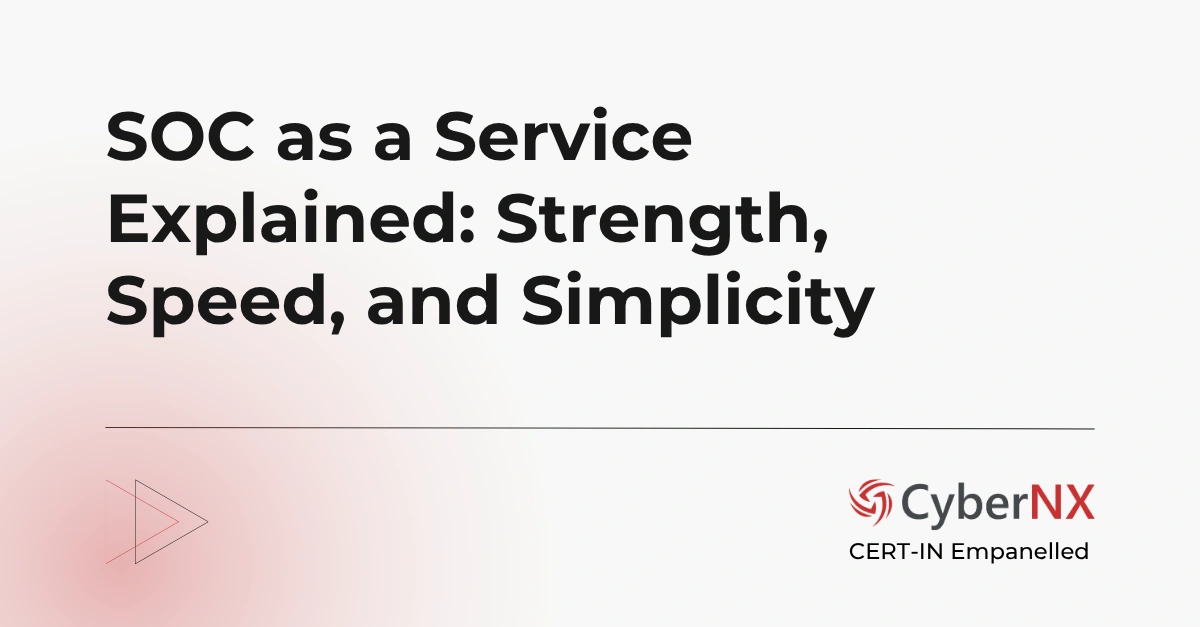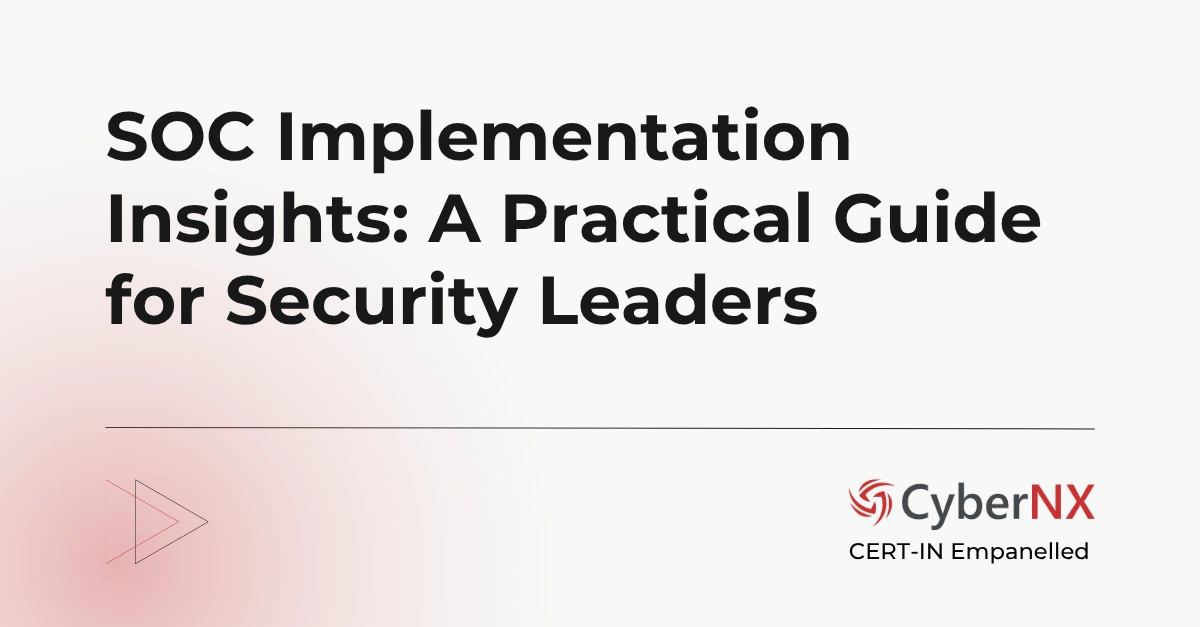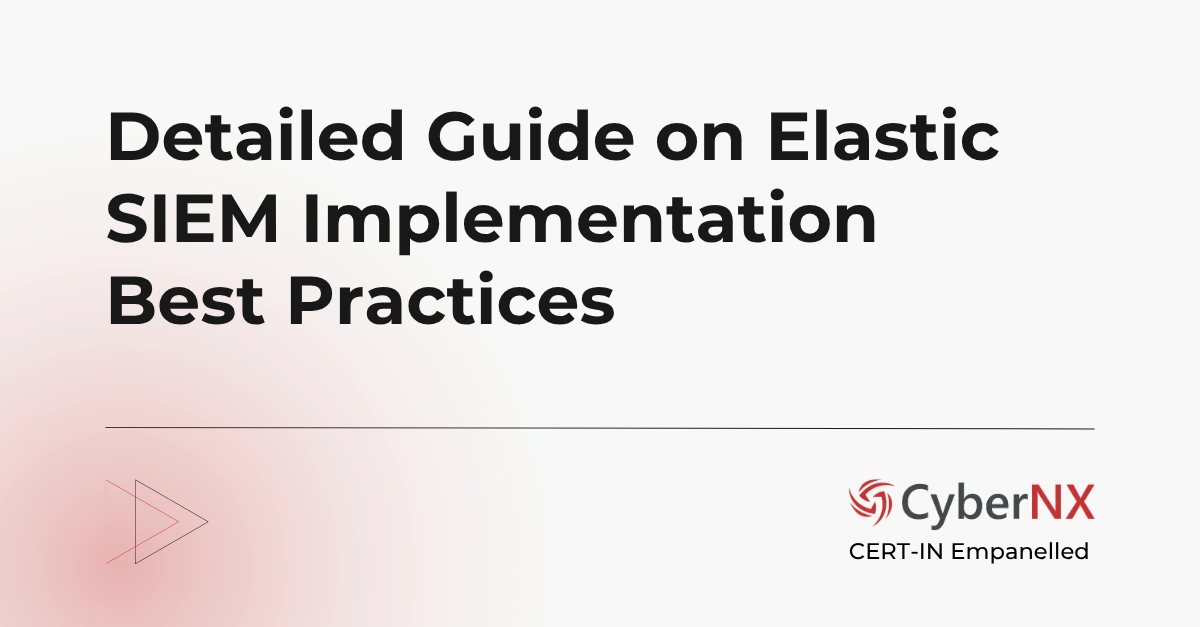The cybersecurity market is growing exponentially. There are a wide array of platforms and technologies plus tools and managed services, helping organizations to defend against possible cyber-attacks and data breaches. However, this choice galore is too difficult to decipher and choose what matters most for IT leaders.
One of the most common questions that surfaces in these discussions is about SIEM vs SOC dynamic. What’s the difference between the two and which one does your business really need?
In this blog, we break down SIEM and SOC in such a way that helps you make sharper, confident security decisions.
Exploring Security Information and Event Management (SIEM)
SIEM, which is short for Security Information and Event Management, is a system that ingests massive volumes of log data from your applications, endpoints, cloud infrastructure and network. It correlates that data to spot anomalies like unusual behaviour, failed logins, suspicious API calls or a sudden spike in outbound traffic.
The key thing SIEM does is it makes any unusual event occurring in the entire IT ecosystem visible.
SIEM finds value among security teams due to its ability to centralize fragmented security data into a single hub. Imagine a large or complex environment with countless system components. Aggregating data from across these systems is a massive relief for those handling security. The real time visibility, compliance reporting and the ability to trace incidents back to their root cause are bonus.
Here is a caveat: without a team of experienced experts to interpret and act on the insights shared, SIEM become another tool. Find the advantages and limitations in the next section.
For in-depth guidance and direction, head to our blog SIEM Guide.
Advantages and Limitations of SIEM Tools
SIEM can scale, and it is perhaps the biggest advantage. Businesses are always meant to grow. And with IT services reaching every nook and corner of business operations, SIEM helps a lot. It monitors extensive number of sources simultaneously, expose hidden patterns and automate alerting, all of it in a quick time.
So, what are the limitations? It can be quite complex for security analysts where alerts miss proper context. An ineffective SIEM tool can drown the whole security teams with false positives, which is undesirable in an already pressured environment.
Also, licensing costs can spike with data volume. And it doesn’t respond to threats—it only detects them. You need skilled professionals to truly harness its potential.
Exploring Security Operations Center (SOC)
A SOC, or Security Operations Center, is not a tool like SIEM. Rather, it is a function or a managed service. A team of cybersecurity professionals who continuously monitor, investigate and respond to threats.
For effective operations, SOC teams do use tools like SIEM but also utilize endpoint detection tools, threat intelligence feeds, forensic tools and more. The SOC teams including manager, engineers, analysts and threat hunters triage alerts, contain breaches, hunt for threats and perform post-incident forensics.
We have covered everything you need to know about Security Operations Center in our blog SOC Guide. Read now.
Key Features of SOC
SOC operates 24X7. That is one of the biggest features. Plus, it blends human expertise with automation, to deliver:
- Continuous threat monitoring across the entire IT spectrum
- Real time alert triaging
- Incident response and containment in less time
- Proactive threat hunting and investigation
- Supports compliance reporting and audit trails
A mature SOC aligns well with your business strategy. Because it adapts to the threat landscape, industry risks and regulatory environment.
Difference Between SIEM and SOC
The SIEM vs SOC debate is a question of capability, context and control. For IT and security leaders, the goal is about ensuring your organization can anticipate, understand and respond to modern threats with confidence. Helping you with this goal, we make the key distinctions clear below:
1. Nature: Platform vs Function
A SIEM is fundamentally a tool, a software or a platform that collects, normalizes and analyses log data from across the IT environment. It is more like an analytical engine that identifies patterns security teams would not otherwise see. A SOC is a function, an organized capability involving people, processes and advanced tools. SOC interprets the signals, assess the risks and initiates a response.
2. Purpose: Detection vs Response
SIEM gives visibility into everything that looks suspicious, best for threat detection. However, SOC takes a step ahead and adds human judgment, investigation rigor and a response playbook. Security leaders could sense here that SIEM and SOC have a symbiotic relationship, an operational bridge between intelligence and action.
3. Execution: Automation vs Expertise
While SIEM works based on rules, automation and correlation logic, only skilled operators such as security analysts can extract maximum value out of SIEM. Because human experts could understand nuances and differentiate noise from real threats. SOC teams provide that expertise by interpreting SIEM alerts in the context of business priorities, industry threats and past incident data.
4. Scalability: Data Volume vs Operational Capacity
A SIEM tool can ingest millions of logs per second, store petabytes and run analytics at speed. But more data always means more alerts. A SOC, on the other hand, scales through maturity, by expanding analyst capacity, enhancing workflows and integrating automation into triage and response.
5. Cost Model: License Fees vs Human Capital
SIEM and SOC present two very different investment models. SIEM costs center on software licensing, data storage and infrastructure. SOC costs are tied to talent, training and 24X7 operations.
How to Decide Between SIEM and SOC for Your Business
This is where strategic thinking matters. Choosing between SIEM and SOC is not straight forward. It depends on the current security maturity, internal expertise and business risk profile.
Here are a few guiding questions which can help:
- Do you already have a cybersecurity team in place? If yes, investing in a SIEM may be a logical step. If not, consider a managed SOC first.
- Are you overwhelmed with security alerts and do not know what to prioritize? You need a SOC, possibly one with automation capabilities.
- Is compliance a key driver for your organization? A SIEM can help automate logs and reports but works best when paired with a response function.
- Do you operate in a high-risk sectors like finance, healthcare and critical infrastructure? Both SIEM and SOC are essential. One offers insight, the other offers action.
For many growing businesses, a managed SOC that includes a modern, cloud-native SIEM delivers the best of both worlds.
Conclusion
The SIEM and SOC question is about understanding the roles they play in your security strategy. When combined effectively, they form the backbone of a proactive, resilient and agile cybersecurity program.
Our SIEM consulting services help organizations gain complete visibility across your IT environment and makes compliance easy. In addition, we also provide customized SOC services as per the business requirements with certified experts, advanced technology and AI powered processes for complete security. Contact us today to know more.
SIEM vs SOC FAQs
Can I use SIEM without a SOC?
Yes, but it’s not recommended for organizations without in-house security teams. SIEM generates alerts, but without a SOC, there’s no one to act on them. Over time, this leads to alert fatigue and critical signals being missed. Pairing SIEM with a SOC ensures context, prioritization, and timely response.
Is a managed SOC a good alternative for SMEs?
Absolutely. Managed SOC (or SOC-as-a-Service) offers 24/7 threat detection and response without the overhead of building your own team. It’s scalable, cost-effective, and often comes bundled with advanced tooling like SIEM and threat intelligence. Perfect for fast-growing, resource-conscious businesses.
How often should SIEM rules be updated?
SIEM rules must be regularly tuned – at least quarterly or immediately following new threat intelligence updates – to reduce false positives and stay relevant. Neglecting updates can blindside your team with irrelevant alerts or miss evolving attack techniques. Rule optimization is a key part of SIEM effectiveness.
What’s more expensive – SIEM or SOC?
It depends on scale. SIEM costs include licensing and infrastructure; SOC costs involve people. A managed SOC with built-in SIEM may offer the best ROI. The real expense lies in inefficiency – underutilized SIEMs or under-resourced SOCs often cost more in risk than they save in budget.
Should a cloud-first company prioritize SIEM or SOC?
For cloud-first environments, a SOC powered by a cloud-native SIEM ensures agility, centralized visibility, and rapid response to cloud threats. These environments move fast, and so should your security function. Look for solutions designed with multi-cloud, DevOps, and API ecosystems in mind.





